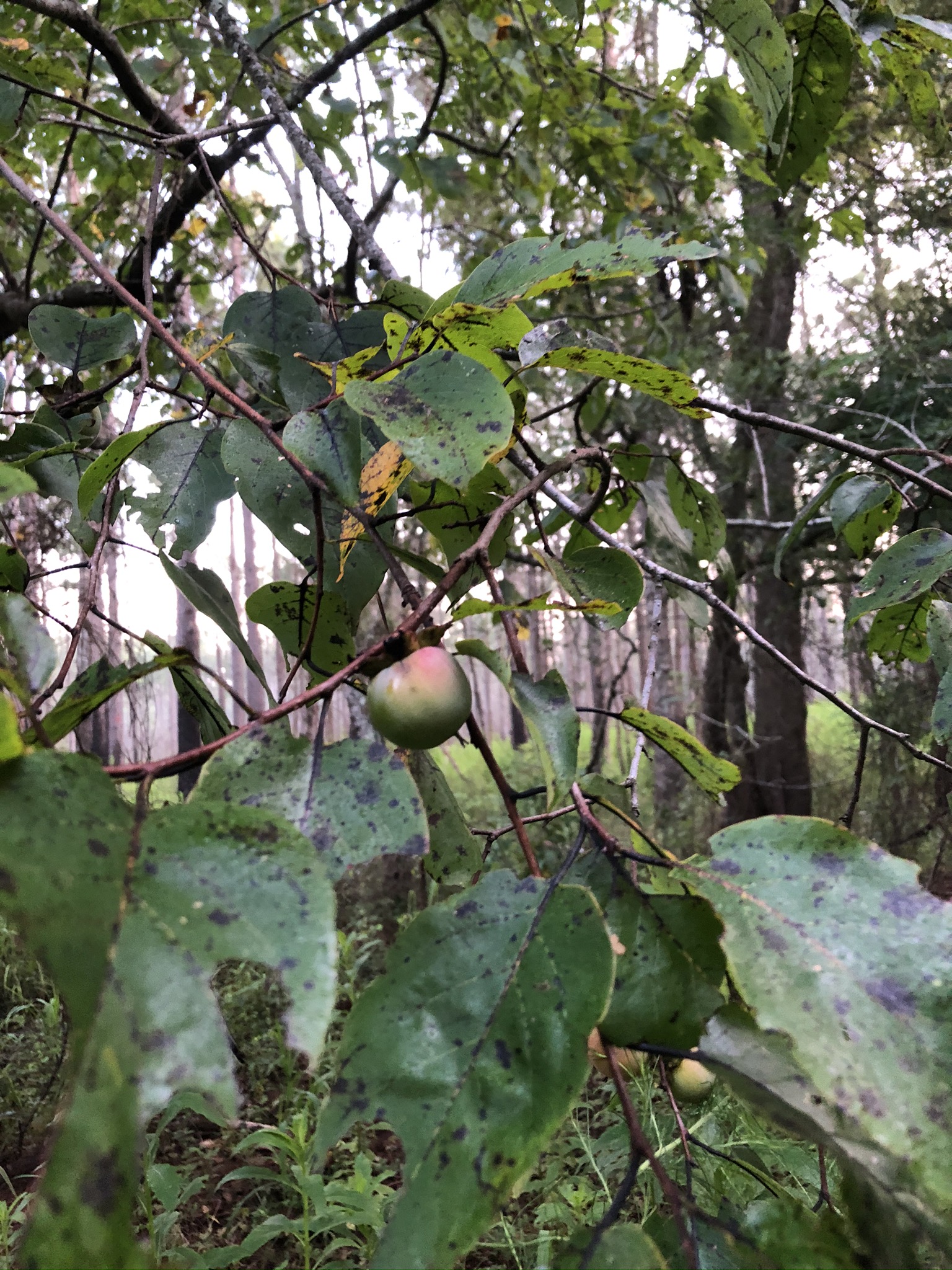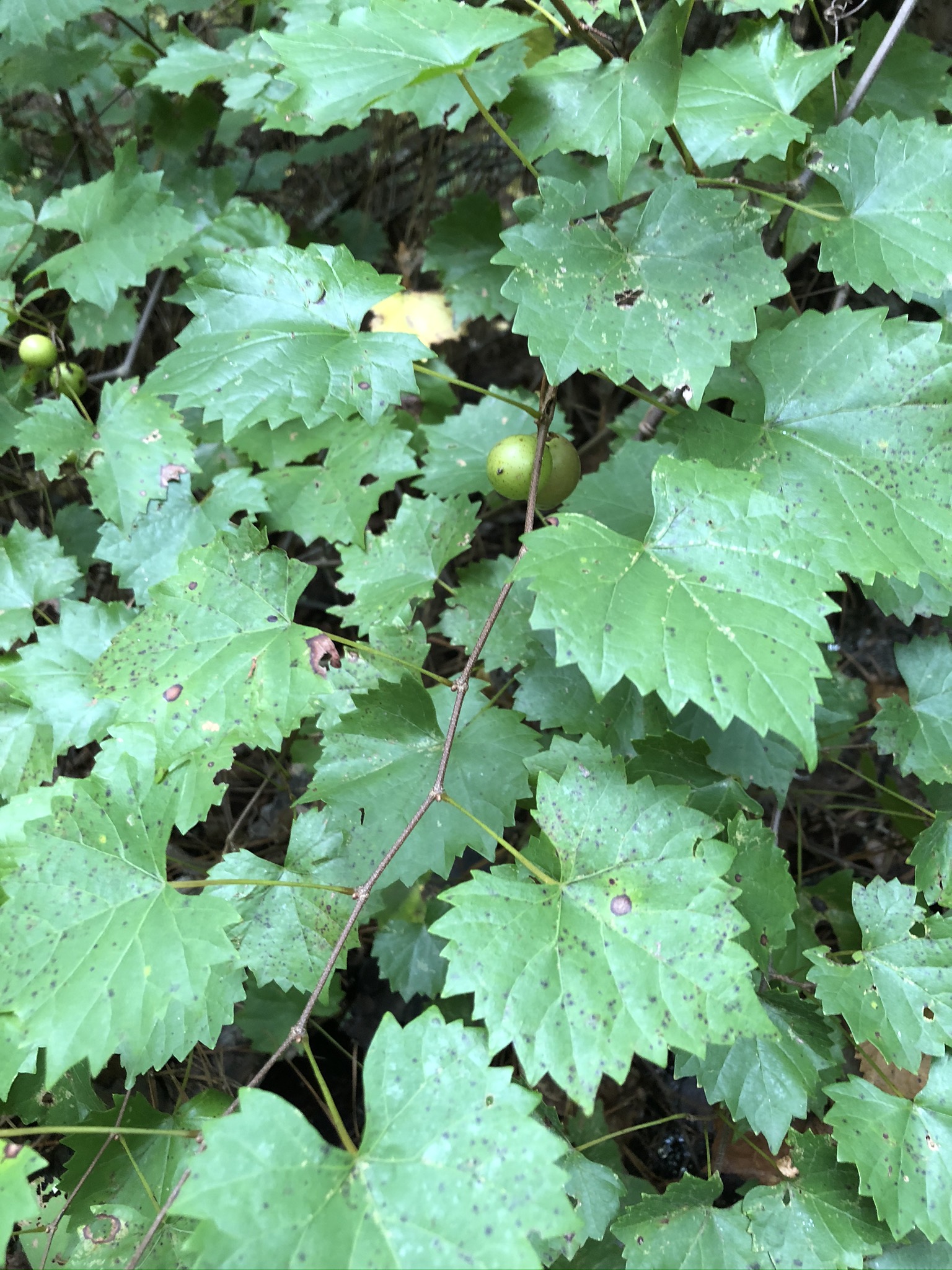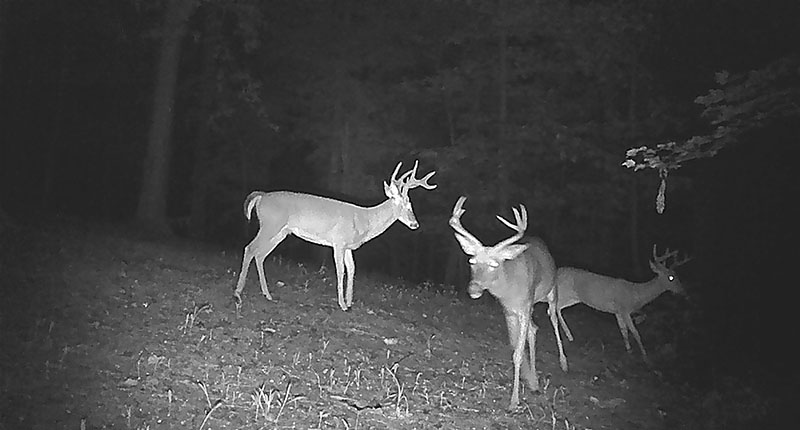
Persimmon
By Evan Wheeler, GWF Private Lands Biologist
As archery season for white-tailed deer approaches, deer hunters throughout Georgia are eagerly anticipating getting into the woods to swat mosquitos, pick off ticks, and hopefully send some arrows into flight! However, this time of the year is highly transitional for deer behaviors and forage availability. As the velvet on antlers comes off and bachelor groups of bucks begin to separate, preferred summer browses are becoming less palatable and the majority of hard mast is not yet available. Therefore, the importance of soft mast in deer diets is elevated and late-growing season soft mast such as persimmon (Diospyros virginiana) and grape (Vitis rotundifolia) are ripening and being highly selected for in deer diets. Identifying the locations and availability of these food sources can be extremely beneficial for locating and patterning deer. Accordingly, identifying and promoting soft mast-producing trees, shrubs, and vines are important considerations for hunters and land managers alike. However, soft mast production is a commonly overlooked component of habitat management plans. In order to maximize year-round habitat quality for white-tailed deer, it is advantageous for landowners and land managers to ensure that soft mast production is being prioritized in addition to other major management considerations such as promoting protein-rich warm-season forage for doe lactation and buck antler growth and managing hardwoods for maximum cool-season hard mast availability.

Muscadine Grape
For more information on land management practices to increase soft mast production on your property and to schedule an AT-NO-COST site visit and property assessment with the GWF biologist, contact Evan Wheeler at evan@gwf.org or 770-787-7887.
As summer comes to an end and the velvet comes off, bachelor groups of bucks will begin to break up and deer activities can become less predictable. After a long, laid back summer, the older more dominant buck in this group begins to show the first signs of pushing the little guys around on 31 August. While deer behaviors are changing, food availability and key sources are also changing. Therefore, identifying key late growing season soft mast producers and hunting these food sources and the trails leading to them can be an effective way to target early-season whitetails.


Recent Comments